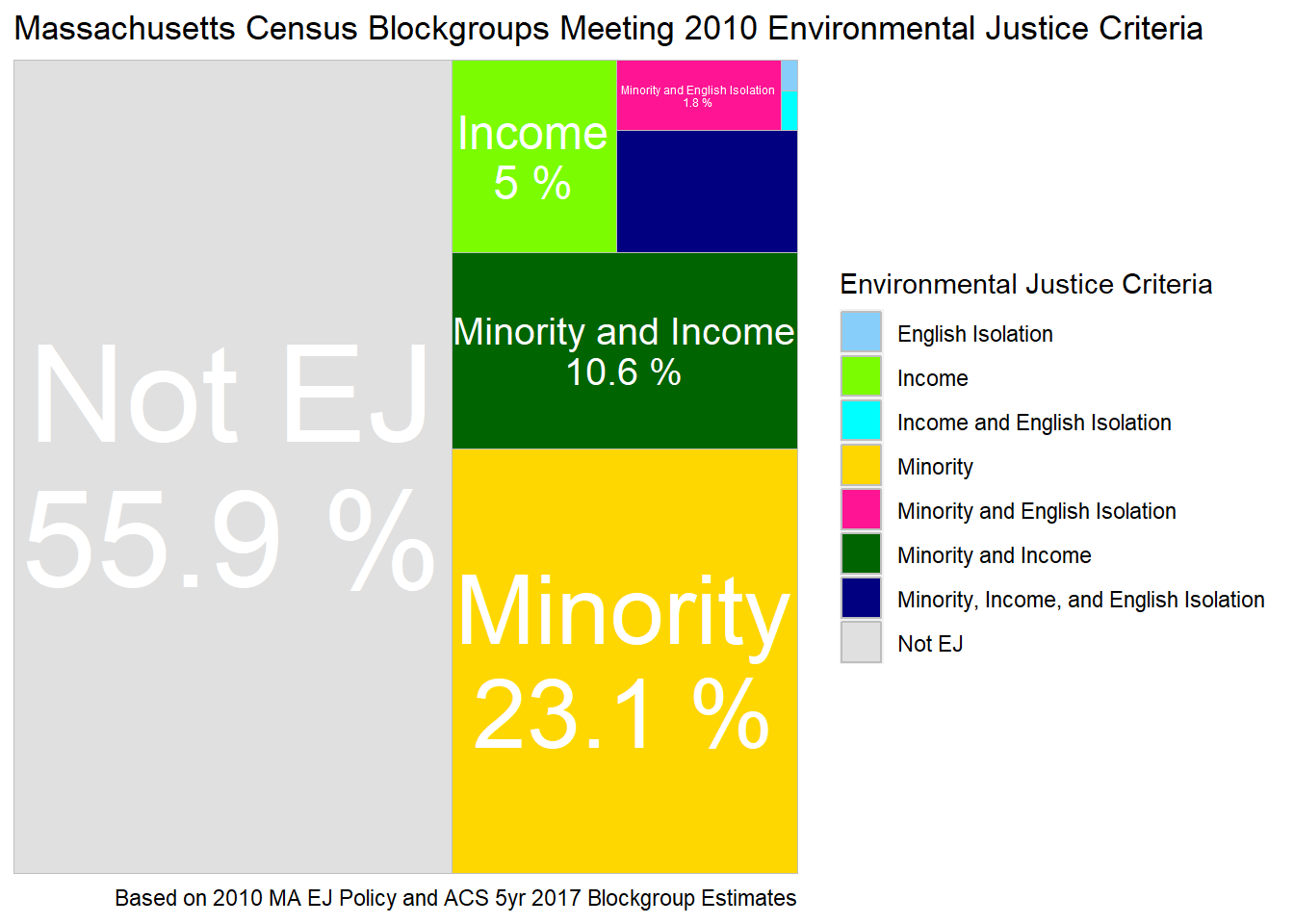Chapter 2 Environmental Justice Policy 2010 - 2016
The de facto Massachusetts environmental justice policy for 2010-2016 defined environmental justice communities as neighborhoods (U.S. Census Bureau census block groups) that meet one or more of the following criteria:
- The median annual household income is at or below 65 percent of the statewide median income for Massachusetts; or
- 25 percent of the residents are minority; or
- 25 percent of the residents are lacking English language proficiency.
Using this definition and the American Community Survey 5-year Estimates for 2013-2017 for block groups in Massachusetts, we find that 44.1% of Massachusetts block groups are classified as environmental justice communities. This classification can be visualized in Figure 2.1 below, which shows the percentage of block groups that fall into each category or combination of environmental justice criteria.

Figure 2.1: Tree map of block groups classified as environmental justice by 2010-2016 policy.
These classifications can be visualized and explored geographically in the interactive map below. Click on the search tool (white box in upper left of map) and type in a town or city name to zoom to that municipality. Click on individual block groups to see more detailed demographics.
Figure 2.2: Map of block groups classified as environmental justice by 2010-2016 policy.